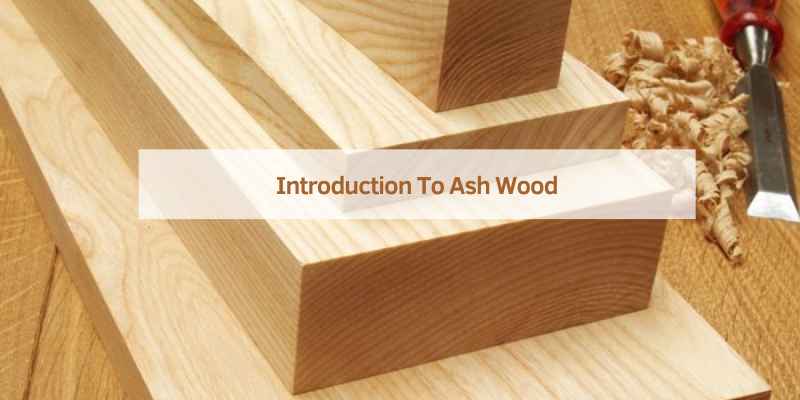Ash wood can be prone to insect infestations and moisture damage. It also tends to discolor over time.
Ash wood is a popular choice for furniture and flooring due to its durability and attractive grain. Despite these benefits, it has some drawbacks that can affect its longevity and aesthetic appeal. Ash wood is susceptible to insect infestations, which can weaken the wood structure over time.
This type of wood also tends to absorb moisture, making it prone to warping and rotting in humid environments. Additionally, exposure to sunlight can cause ash wood to discolor, affecting its visual appeal. People considering ash wood should weigh these negatives against its benefits to make an informed decision. Understanding these drawbacks helps in proper maintenance and care.
Introduction To Ash Wood
Ash wood is very popular. People use it for furniture and sports equipment. It is strong and flexible. Many like its light color and smooth texture. It is easy to work with. This makes it a favorite for carpenters and woodworkers. Ash wood is also used in flooring and doors. Its durability makes it a top choice for these products. Some even use it for kitchen cabinets.
At first glance, ash wood looks great. Its grain pattern is attractive. It feels smooth to touch. It can be polished to a high shine. Many people love its appearance. It looks elegant in homes and offices. Ash wood is also versatile. It matches well with different styles. This makes it a popular choice. But, there are downsides too. It is not perfect for every use.

Susceptibility To Pests
Ash wood is very vulnerable to the Emerald Ash Borer. This beetle can kill an ash tree quickly. It bores into the tree and causes a lot of damage. Infested trees often die within a few years. This pest has spread to many regions. Controlling it is very hard. Many ash trees have been lost because of this pest.
Treatments can help protect ash trees from pests. Some treatments involve injecting chemicals into the tree. Others may use sprays. These treatments can be costly and must be repeated often. Homeowners and cities spend a lot of money on these treatments. Not all trees can be saved, even with treatments. Some trees still get infested and die.
Limited Durability Outdoors
Ash wood lacks resilience in outdoor environments, leading to faster deterioration. Exposure to weather elements accelerates decay and damage.
Weathering Challenges
Ash wood faces many challenges outdoors. It is not very resistant to weather. Rain and sun can damage it quickly. The wood can warp and crack. This means it loses its shape. It may also rot if exposed to too much moisture.
Using ash wood outside requires extra care. One must treat it with special coatings. These coatings help protect the wood. But they need to be applied regularly. Without this, the wood will not last long. This makes it less ideal for outdoor use.
Maintenance Requirements
Maintaining ash wood is hard work. It needs regular inspections. This helps spot any damage early. One must also reapply protective coatings often. This can be time-consuming and costly. Neglecting maintenance shortens the wood’s life.
Using ash wood outdoors means more work. It is not as durable as other woods. Regular upkeep is essential. This makes it less convenient for many people.
Weakness To Moisture
Ash wood’s significant drawback is its susceptibility to moisture, leading to warping and decay over time. This vulnerability makes it less ideal for outdoor applications.
Rot And Decay
Ash wood is very prone to moisture. It can easily rot and decay if it gets wet. This makes it a poor choice for outdoor use. Even indoors, it needs to be kept dry. Moisture can cause the wood to lose its strength. This can lead to damage and even breakage.
Mitigation Strategies
To protect ash wood from moisture, use a good sealant. Sealants can help keep the wood dry. Another strategy is to use wood preservatives. These can help prevent rot and decay. Keep ash wood in a dry environment. Avoid placing it in damp areas.
Variability In Quality
Ash wood often suffers from variability in quality, leading to inconsistencies in appearance and durability. These fluctuations can make it challenging for projects requiring uniformity and strength.
Grain Inconsistencies
Ash wood often shows grain inconsistencies. These inconsistencies can make the wood appear less attractive. Some parts may have a coarse texture, while others might be smooth. This can be a problem for woodworkers and craftsmen. They need wood that is consistent in texture.
Impact On Craftsmanship
Inconsistent grain affects the quality of finished products. Crafting with ash wood can be challenging. The tools might wear out faster. Also, it requires more effort to achieve a smooth finish. This can increase the cost of production. Sometimes, craftsmen need to discard pieces with too many inconsistencies.
Environmental Concerns
Ash wood is popular for furniture and flooring. This leads to extensive logging. Forests are cut down at a rapid rate. This has a negative impact on ecosystems. Many animals lose their natural habitats. Soil erosion becomes a big problem. Trees help to hold the soil in place.
Harvesting ash wood is often not sustainable. Forests need time to recover after logging. Sustainable practices are not always followed. This leads to long-term damage to the environment. Efforts to plant new trees are not enough. The demand for ash wood is too high. It is important to consider alternative materials.
Allergenic Wood Dust
Ash wood dust can trigger allergic reactions, causing respiratory issues and skin irritation. Exposure to this allergenic dust may lead to serious health concerns for sensitive individuals.
Health Implications
Ash wood dust can be harmful to health. It may cause breathing problems. Some people may develop skin rashes. Eyes can get irritated if dust particles enter them. Long-term exposure may lead to serious issues.
Safety Measures
Always wear a mask when working with ash wood. Use goggles to protect your eyes. Cover your skin with long sleeves and gloves. Keep the work area well-ventilated to minimize dust. Clean up dust immediately to reduce exposure.
Cost And Availability
Ash wood prices can be very high. The cost is not stable. It changes often. Many factors cause these changes. Demand and supply affect the price. Natural disasters can also impact availability. These disasters reduce the supply. This makes the wood more expensive. High costs can be a problem for buyers.
There are other wood options. Oak and pine are good choices. These woods are often cheaper. They are also more available. Bamboo is another option. It grows fast and is eco-friendly. People can use these alternatives to save money. They can also avoid the high cost of ash wood.
Final Thoughts
Ash wood, though aesthetically pleasing, suffers from poor resistance to insects and decay. Its tendency to warp and shrink can lead to structural issues over time. High maintenance requirements further diminish its appeal for long-term use.
Balancing Pros And Cons
Ash wood has many good qualities. It is strong and has a nice color. But it also has some bad sides. Ash wood can get damaged by bugs. It can also warp when wet. People should know both the good and bad sides. This helps them make a smart choice. They need to decide if ash wood is right for them. Some people may choose another type of wood. Others might still like ash wood. It all depends on their needs and what they want.
Future Of Ash Wood
The future of ash wood is uncertain. Many ash trees are dying. A bug called the emerald ash borer is a big threat. This bug kills ash trees quickly. If more ash trees die, there will be less ash wood. This could make ash wood rare and expensive. People are trying to save ash trees. They are planting new trees and using bug sprays. These efforts may help protect ash wood for the future.

Frequently Asked Questions
What Is The Disadvantage Of Ash Wood?
Ash wood is prone to insect infestations and rot. It can warp and crack over time.
Is Ash A Good Wood To Use?
Yes, ash is a good wood to use. It is strong, durable, and has a pleasing grain. Ideal for furniture, flooring, and sports equipment. Ash wood resists shock well and is easy to work with.
Is Ash A Toxic Wood?
No, ash wood is not toxic. It’s safe for woodworking and furniture. Always wear a mask when sanding to avoid inhaling dust.
Does Ash Wood Rot Easily?
Ash wood does not rot easily. It is moderately resistant to decay. Proper treatment increases its durability.
Conclusion
Ash wood, despite its beauty, presents several drawbacks. Its susceptibility to pests and moisture can lead to damage. High maintenance requirements and cost might deter some. Considering these factors, it’s essential to weigh the pros and cons before choosing ash wood for your project.
Make an informed decision to ensure long-term satisfaction.


